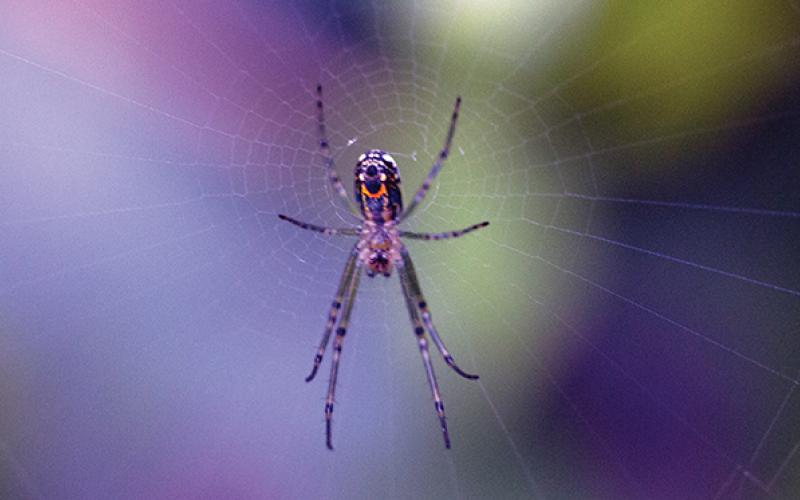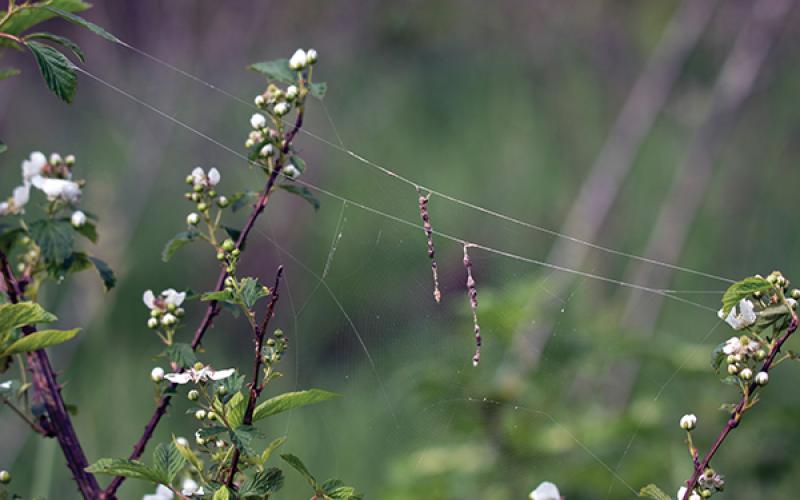Barbara McRae, Columnist
One happy thing to come from our national malaise is that millions of Americans are rediscovering their own back yards and the joys of nature. Perhaps many of those – including some of you – have found new interests. I certainly have. Spiders are one of them.
This new interest of mine happened by accident. I had occasionally taken photos of interesting spiders I encountered. At a loss as to what to do next, I saved the images in a file and let them languish.
In April, while researching a tiny critter I encountered on the Greenway, I found that the North Carolina Biodiversity Project (NCBP) Is creating a site for spiders to go along with several existing sites that are dedicated to other groups (including moths and dragonflies). I have used some of these frequently, both to contribute and to learn.
The spider site is not fully operational yet, but you can go to it (Arachnids of North Carolina) and see all the species so far catalogued for our state and for each county.
When I reached out to the experts on the site, they were nice enough to encourage me and answer my questions. Soon, when it is fully complete, Arachnids of North Carolina will have a page for people to enter their observations and attach photos. That isn’t ready yet, but the site has plenty for you to explore, including many photos and notes on species.
My first contribution turned out to be a bowl and doily spider, Frontinella pyramitela. You can tell that spiders have friends in this world – someone cared enough to give this one a lovely name, which happens to describe the appearance of its web. Brian Bockhahn, the regional education specialist who responded to me, explained that the bowl is above, the doily below, protecting the bowl (just as a doily might have done in your grandmother’s house). The spider sits in the bottom of the bowl, under some non-sticky strands that knock flying insects down to it. This may sound chancy, but it works well. Building the web is a lot of work, but then the spider can dine at its leisure.
Guess what? Though this is a common spider, it had not yet been reported from Macon County. I, a complete novice at this, had the honor of making the first report. That went to my head, I guess. Soon, I was all in. I pulled out the images I had been storing and submitted them. What a wealth of creatures I had stumbled upon: conical trashline orbweavers, nursery web spiders, an arrowhead microthena, Venusta orchard orbweaver, and many more. Among them were several that had not yet been recorded for our county.
When I started this, 39 spiders were listed for Macon County. Now there are 65. According to Brian, each county in the state probably has 300-400 species; each yard should have 50-100. There is so much left to discover! This is where people like you and me come in. If you are a naturalist with a camera, and a hunger to learn and discover, the world needs you.
As you probably know, insects, spiders, and many other living things are facing alarming declines now. Perhaps you have worried about this but didn’t know what to do. Adding to our pool of knowledge is one way – you cannot protect or save something unless you know it exists.
“Backyard naturalists contribute greatly to our knowledge of the flora and fauna in North Carolina by contributing site data for their own counties and natural history information (like life cycle and prey items). A photo can be worth a lot,” Brian tells me.
Many rewards come from this effort. One, of course, is the joy of contributing to our knowledge of the natural world. Another is the sheer joy of discovering and delighting in the world of another creature.
Every being on this earth is the center of its own universe. I am drawn to these spiders precisely because they have no interest in me. Some have very keen senses (lots of eyes!) and run when they notice me, but for the most part they continue their lives as if I didn’t exist. And, I get to enjoy the show.
Next week, I will introduce you to one of the little dramas I have been watching in my yard. It has become a serial, and every day I rush out to see what is happening now.
To learn more about the biodiversity project, go to nc-biodiversity.org.


